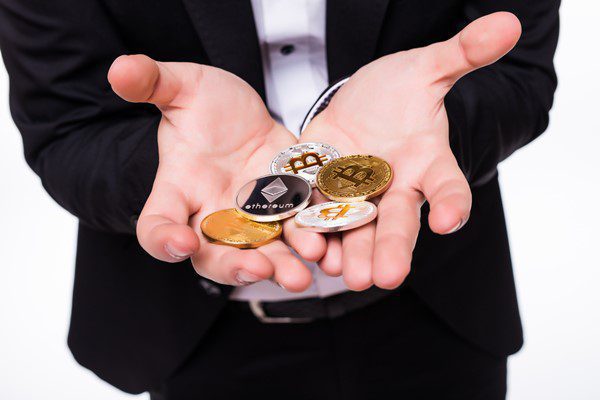Many different types of cryptocurrencies are available worldwide, such as Tether and Dogecoin. This makes it hard to get started with cryptocurrency. Here are the top ten cryptocurrencies by market cap, which is the total value of all coins on the market. This can assist you in obtaining a feel for the market.
How do cryptic currencies work?
Cryptocurrency is an electronic asset that can be traded freely between people without the help of a central bank or government. More than 19,000 cryptocurrency projects are going on right now. They are part of the $1.3 trillion cryptocurrency industry around the world.
Top 10 Cryptocurrencies in 2022
Ethereum (ETH)
Ethereum is a cryptocurrency and blockchain platform popular with programmers because of its many features, such as smart contracts that run automatically when certain conditions are met and non-fungible tokens that can’t be exchanged for cash (NFTs). On top of that, Ethereum has grown a lot. Between April 2016 and the starting of June 2022, its price went from about $11 to over $1,800, a rise of over 16,300%.
Binance Coin (BNB)
Binance, one of the largest cryptocurrency markets in the world, lets you trade and pay fees with a cryptocurrency called Binance Coin (BNB). Since it was first introduced in 2017, Binance Coin has become more than a way to trade on Binance’s exchange platform.
It can now be used to process payments, trade goods, and even plan a vacation. It can be exchanged or swapped for another cryptocurrency, such as Bitcoin or Ethereum. In 2017, the cost of BNB was $0.10. By early June 2022, its price had increased almost 300,000 to about $300.
Bitcoins (BTC)
Satoshi Nakamoto made the initial cryptocurrency, Bitcoin (BTC). Like most other cryptocurrencies, BTC runs on a blockchain, a ledger that keeps track of transactions and shares across a network of thousands of servers. Updated distributed ledgers must be validated by solving a cryptographic puzzle as proof of work.
This keeps Bitcoin safe and keeps scammers away. As more and more people use Bitcoin, its value has gone up. In May 2016, a single Bitcoin was worth about $500. On June 1, 2022, buying one Bitcoin cost about $29,700. That’s a rise of more than 5,800 times.
Tether (USDT)
Tether (USDT) is a stablecoin, which means it is backed by fiat currencies like U.S. dollars and euros, and, unlike some other types of cryptocurrencies, its price is supposed to stay the same as one of those currencies. So, buyers worried about how much the value of different coins changes choose Tether because its value is expected to be more stable than other coins.
Dogecoin (DOGE)
Dogecoin is famous for being made a joke in 2013. A passionate community and funny memes quickly helped it become a popular cryptocurrency. There is no restriction to how numerous Dogecoins can be made. Unlike many other digital currencies, the value of this one could fall as the number of units available increases. Dogecoin cost $0.0002 in 2017. By June 1, 2022, its price was $0.08, a massive expansion of over 40,000%.
U.S. Dollar Coin (USDC)
Like Tether, USD Coin (USDC) is a stablecoin that aims for a 1:1 ratio between U.S. dollars and its currency. Ethereum powers USDC, and you can use USD Coin to make cross-border transactions.
XRP (XRP)
XRP is a digital currency used on a network to trade many different types of money. It has both traditional currencies and other essential cryptocurrencies. Some of the same people started Ripple, a company that handles payments and makes digital technology. At the beginning of 2017, XRP was worth $0.006. On June 1, 2022, it was worth $0.40, a rise of more than 6,400%.
Binance USD (BUSD)
Binance and Paxos created the stablecoin called Binance USD (BUSD) to give people a cryptocurrency backed by the dollar. Paxos has enough U.S. dollars to pay for all of the BUSD in circulation and keep this value. Like stable coins, BUSD lets traders and users trade with other crypto assets while reducing the risk of price fluctuations.
Solana (SOL)
Solana is a platform that supports smart contracts, decentralized apps, and decentralized finance (Defi). It uses a unique method that is a mix of proof-of-history and proof-of-stake to handle transactions quickly and safely. The native token of Solana, SOL, is used to run the platform. When SOL first came out in 2020, it cost $0.77. By the beginning of June 2022, the price had gone up to about $40.58, which was a gain of more than 5,100%.
Cardano (ADA)
Cardano (ADA), who joined the crypto world a little later, is known for using proof-of-stake verification from the start. By getting rid of the competition, which is the problem-solving part of transaction validation in systems like Bitcoin, this method uses less energy, speeds up transactions, and doesn’t hurt the environment too much.
Cardano works like Ethereum in that its native token, ADA, powers intelligent contracts, and applications that don’t need a central server. Compared to other essential crypto coins, the Cardano ADA token isn’t changing as much as other currencies. In 2017, the cost of ADA is $0.02. As of June 1, 2022, it cost $0.55. That’s an increase of 2,650%.



